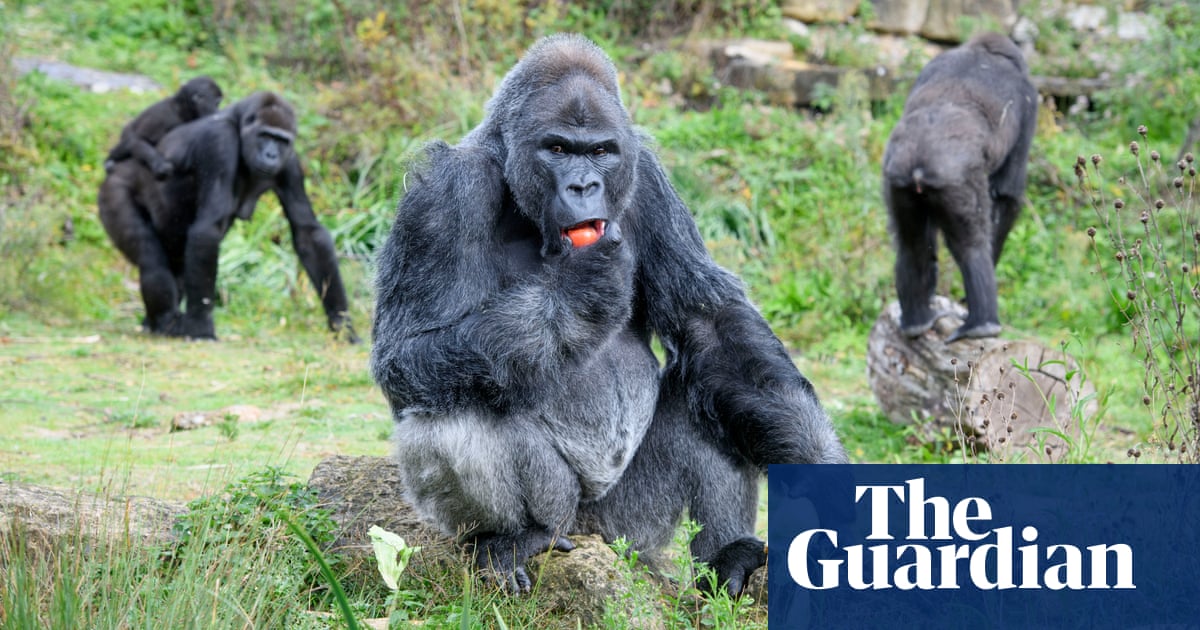- October 18, 2022
- No Comment
- 6 minutes read
‘A huge undertaking’: Bristol zoo faces challenge of rehoming 25,000 animals – The Guardian

With the Clifton site closed, zoo staff are grappling with logistics of moving 300 species to new homes
Moving house can strain the strongest of family relationships, and western lowland gorillas are no exception.
At times of uncertainty and stress, Bristol zoo’s troop of eight primates look to their silverback, Jock, for leadership and reassurance. But moving him at the same time as his harem of three females and their children – each weighing between 13.4kg and 184kg – is no straightforward task.
And this is only one small piece of a much larger logistical jigsaw that the zoo’s keepers and curators are grappling with.
The world’s fifth oldest zoo, Bristol Zoo Gardens, has occupied its current five-hectare (12-acre) site on the edge of Clifton Downs since 1836. But having permanently closed its gates to the public on 3 September, its keepers are facing the ultimate relocation challenge: moving 300 species – approximately 25,000 animals in total – to zoos, aquariums and colleges in the UK and abroad.
Of these species, 76 – including gorillas and slender-snouted crocodiles – are being moved and acquired for the zoo’s sister site, the Wild Place Project, in South Gloucestershire, which will become the new Bristol zoo. But only those that are threatened, and which Bristol Zoological Society, which operates the zoo, is actively involved in conservation or breeding programmes for, will be relocated there.
Many other species, from meerkats to millipedes, penguins and three 1.2 metre-long paddlefish, are being relocated to zoos as far afield as the US and Spain. “I don’t think anything on this scale has been attempted before,” says Nigel Simpson, head of animal collections at Bristol Zoological Society.
So how do you help a gorilla to move house, or even resettle a disestablishment of millipedes? For some animals, it’s relatively simple. For instance, the flamingoes were transported loose, inside the back of a padded van, to Flamingo Land Resort in Yorkshire. “They all go together as a colony and, as the van moves around the corner, all the flamingos move as one unit, and then they move back again,” Simpson says.
The zoo’s Aldabra giant tortoises – Twiggie, Biggie, Mike and Helen – will be ferried to Jersey’s Durrell zoo in wooden boxes, although every box must be custom-made to fit each tortoise, to ensure they do not injure themselves during transit.
However, even the simplest creatures can create surprises. “People often think of it being the larger animals that are the hardest to move, but sometimes it’s the most numerous,” says Laura Graham, an animal registrar who helps to plan each move from start to finish.
Sign up to First Edition
Archie Bland and Nimo Omer take you through the top stories and what they mean, free every weekday morning
“You might plan for a certain number of animals, but if it’s something that lives under the soil, like our red-legged millipedes … We thought we had about 2,000, but it turned out they’d been breeding so well that when [the keepers] filtered through the soil, they found we had 9,827, meaning we had to upgrade to our large zoo vehicle, to transport these massive vats of soil, rather than just collecting them in a car. You’ve got to be very flexible and adaptable.”
Other species are technically challenging. American paddlefish, for instance, have long, spoon-like bills, which are so heavy that they could snap off when the fish are briefly lifted out of the water into their transportation tanks.
Rising to the challenge, aquarium team leader Tamara Canalejas is plotting an elaborate operation which will see several divers enter the water and lift the fish out on giant green stretchers, passing them to land-based assistants who will gently carry the fish to a large swimming pool. From here, the fish will be loaded on to a lorry and driven to their new home in Valencia, Spain, via the Eurotunnel.
Moving the gorillas will also be challenging, though for different reasons. “They are such an intelligent species, and they are also a social species,” says Sarah Gedman, the zoo’s mammal team leader. “Typically, when you export gorillas from a zoo it is one at a time, mimicking the natural migration away from the group as [individuals] reach maturity. But we are in quite a unique situation where we are potentially moving a whole family at the same time.”
Although it is still a work in progress, Gedman’s plan is likely to centre around Jock. “For females and kids alike, their relationship focus is with the silverback,” she says. Ideally, this means persuading him into a crate, and then the other gorillas soon afterwards, “but the logistics of actually getting eight gorillas into crates, all at the same time, is a huge undertaking”.
It will mean building the crates and delivering them into the gorillas’ enclosure ahead of time, to allow them to get used to them. “I think a successful move, for us, will be getting everyone to voluntarily walk into their crate, or at least to be [tranquilised] at the same time, so that they can settle into their new home as a family, and in a way that is as positive and stress-free for them as it can be,” Gedman says. “We might start by feeding them in the crate, or giving them little bits of fruit as a reward for going into the crate or letting us shut the door behind them.”
It turns out, much like travelling with human children over long distances, giving them a bit of something sweet makes the journey much easier.

